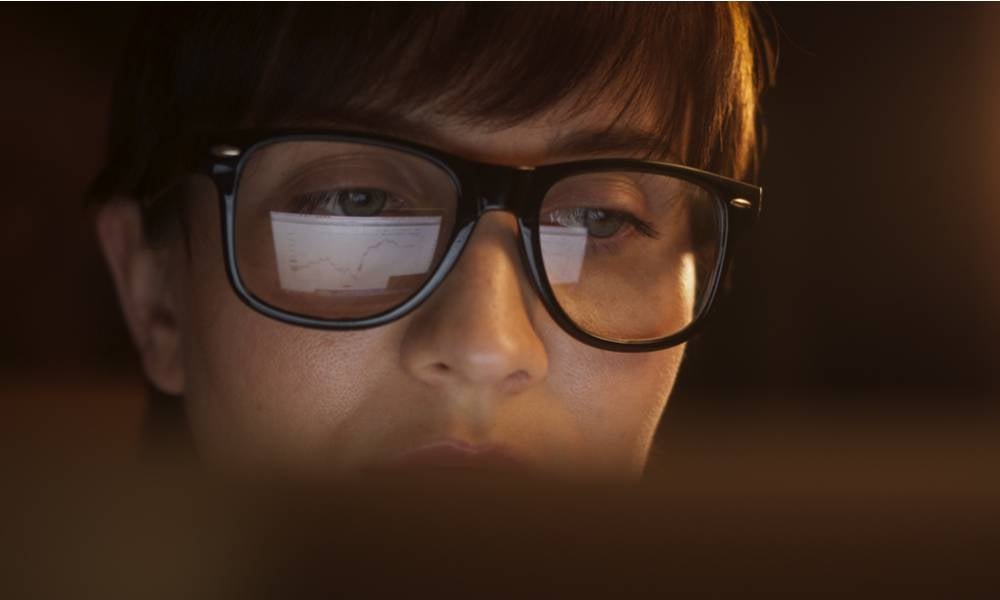Lifeline CEO on how tech can help support employee mental health
Organisations can leverage digital technologies to promote mental health at work, but they must also consider the ethical implications, says Lifeline International CEO Thilini Perera
In this article, we reference mental health, self-harm and suicide. If you need to talk to someone and you are based in Australia, you can contact Lifeline on 13 11 14 for support.
The COVID-19 pandemic has exposed the crucial need for mental health resources, as people have had to navigate life and work while experiencing emotional fatigue throughout the pandemic. With limited access to face-to-face social networks, mental health has become a sincere concern for many, especially young adults. For those with existing mental health conditions, it has been even more challenging.
The Business of Mental Health is the sixth episode in The Business of Leadership Podcast, hosted by AGSM at UNSW Business School. In this episode, Professor Nick Wailes, Senior Deputy Dean and Director at AGSM, speaks with Thilini Perera, CEO of the crisis support service Lifeline International, and AGSM MBAE Candidate, about how organisations can leverage emerging digital technologies like artificial intelligence (AI) to provide better access and reach and deliver much-needed mental health support.

Mental health impact of a global pandemic
After a decade of working across several executive leadership roles at Lifeline Australia, Ms Perera took the helm at Lifeline International last year, working with 21 Lifeline member countries across 20 countries to ensure suicide prevention support is available, accepted and encouraged worldwide.
Throughout the pandemic, she gained several insights into the impact of illness and isolation on mental health. While we are only just beginning to understand the full impact of the pandemic on mental health, there is significant evidence that people struggled. For example, Lifeline Australia averaged under 2,500 calls per day over two years ago. But in the height of the pandemic, they regularly saw more than 3,500 calls per day – a 40 per cent increase in demand for their services. “That’s a significant increase and wasn’t dissimilar to other parts of the world where there was a huge increase in demand for services,” says Ms Perera.
The prevalence of mental illness is increasingly common in Australia. One in two (46 per cent per cent) Australians aged 16–85 would have experienced a mental disorder during their lifetime. In 2020-21, 15 per cent of Australians aged 16-85 years experienced high or very high levels of psychological distress. Women were more likely to experience high or very high levels of psychological distress than men, and young adults aged 16-34 years experienced high or very high levels of psychological distress, more than twice the rate of those aged 65-85 years.
Read more: Are we seeing the Great Resignation – or the Great Exhaustion?
How has Lifeline evolved to address these changes? As an organisation, it has a history of adopting emerging tech. Lifeline started in Australia in 1963. Using a phone to deliver a crisis support service was, at the time, revolutionary – it had never been done before, says Ms Perera. Today, Lifeline Australia is working towards an omnichannel platform where people can seamlessly text, call, use web chat and seamlessly move through systems and services across those channels as needed. The hope is that Lifeline will be able to manage the future overflow of its channels effectively, explains Ms Perera.
“I think it’s a very interesting time (particularly following COVID) that we are living in. We can actually use technology in a way that we haven’t before, across the world, to ensure that more people can access help,” she says.
But importantly, she says the organisation is “keeping its eye on the prize” in delivering the service in ways that the people who need it most can access it, and they remain at the heart of any innovations. “We put ourselves in that person’s shoes: how do we make it easy for that person to access help? What are the channels they want to use?”
But it’s not just organisations that specialise in mental health services like Lifeline that have played a key role in supporting mental health and wellbeing and offering crucial mental health resources. It has also become a key focus area for all workplaces. “We can all do so many things as a community, including in the workplace, to save lives,” says Ms Perera.

Digital technology can target prevention
There are obvious ways that tech can be used to promote mental health services, for example, wellbeing apps to help manage anxiety disorders on people’s smartphones, or by limiting screen time and social media use altogether. But some businesses are looking beyond initiatives in telehealth to more nuanced interventions through the use of technology.
More than they realise, individual team leaders and employers also have so much data available, suggests Ms Perera. For example, what does your organisation’s data about absenteeism tell you? Is it telling you that this staff member is burnt out? What can performance data tell you? And is your team just having performance discussions, or are you also addressing mental health? Is how people feel and look after themselves part of these discussions?
Read more: What was the real impact of COVID-19 on our mental health?
“I think there’s a lot we can do to analyse the data in that space to understand what’s happening in our organisations,” says Ms Perera. “I imagine there’ll be some anxiousness about coming back to a room full of people after being locked away in our houses. So how do we have a conversation with our teams that acknowledges what those anxieties might be?
“How do we work through them? How do we ensure we build support around our return-to-work plan? So that people know they can talk to their manager about it and not be afraid to bring it up,” she continues.
Companies in the US are already trialling predictive analytics to support mental health, explains Ms Perera. “We’re looking across to the US where there have been some really big studies around predictive analytics being used to actually look at risk factors and predict someone’s suicidality,” she says.
There have also been trials around speech and fears analytics, which can help businesses identify nuances like if someone’s voice has changed and can be used to predict suicidality. “There’ve been trials conducted in Boston around showing participants video footage and seeing the reaction on their faces and looking at understanding those emotional reactions on someone’s face and how that can predict suicidality and how we can use that to save lives,” explains Ms Perera.

Businesses must consider ethical implications
Digital tools can open huge possibilities, but businesses must tread very carefully and consider the ethical implications. “I think the important thing is that none of that can ever displace human connection and the need to have that human connection, a sense of belonging and empathy that we want to receive from others when they contact Lifeline,” says Ms Perera.
One of the biggest things leaders can do to promote good mental health in their workplaces is to walk the talk by demonstrating that it’s okay to ask for help and talk openly about your own approach to health and wellness as an individual. Because in the end, human connection is what truly matters.
“When someone contacts us, they’re looking for human connection; they’re looking for empathy and care. I don’t think you can ever replace that, but we certainly need to turn our minds to technology and innovation to see how we can enhance what we do in that human connection space,” she concludes.
